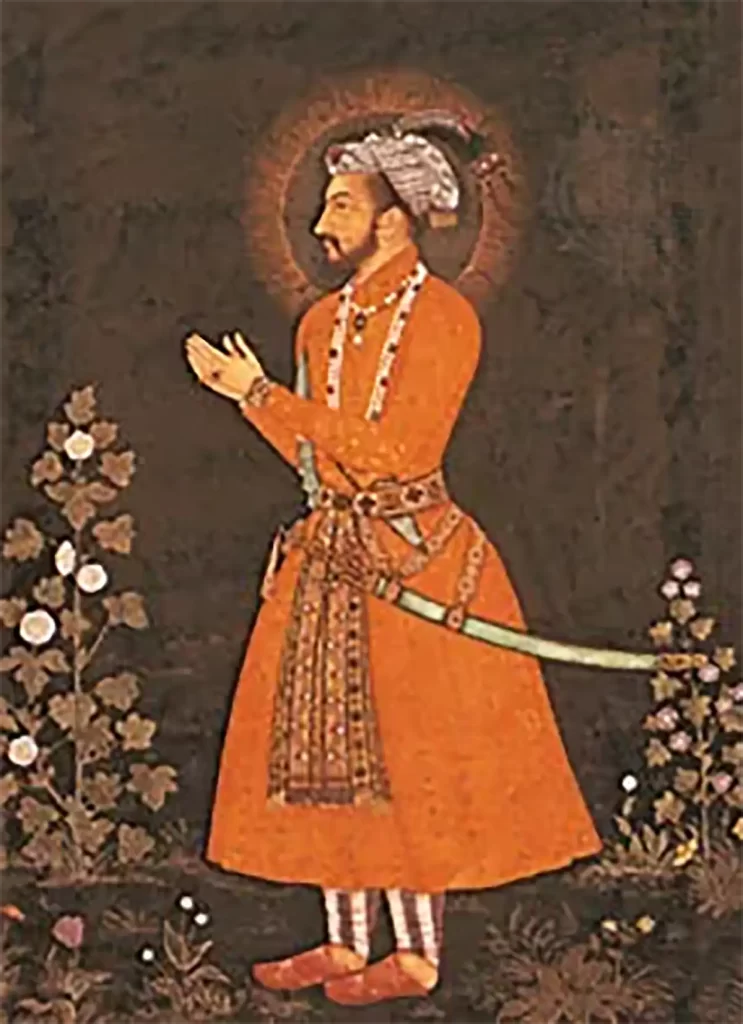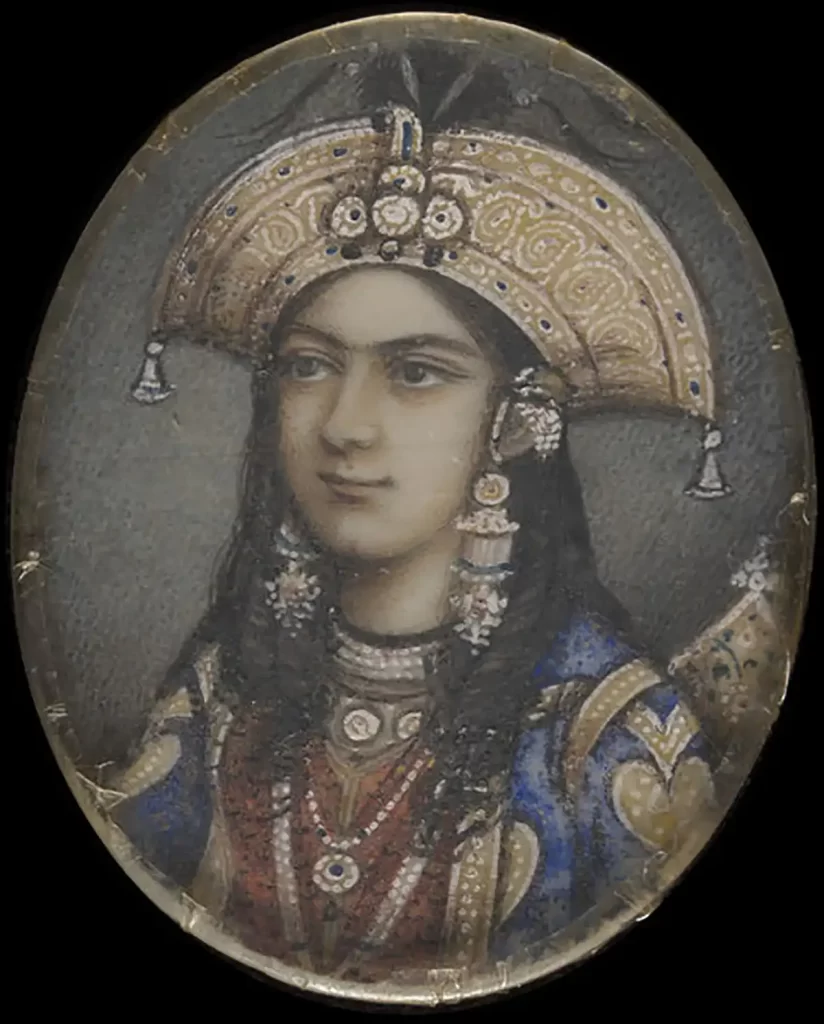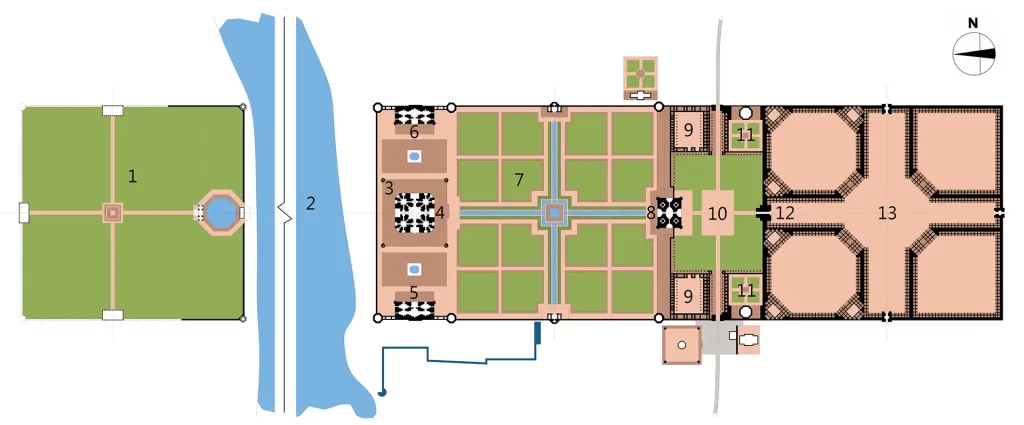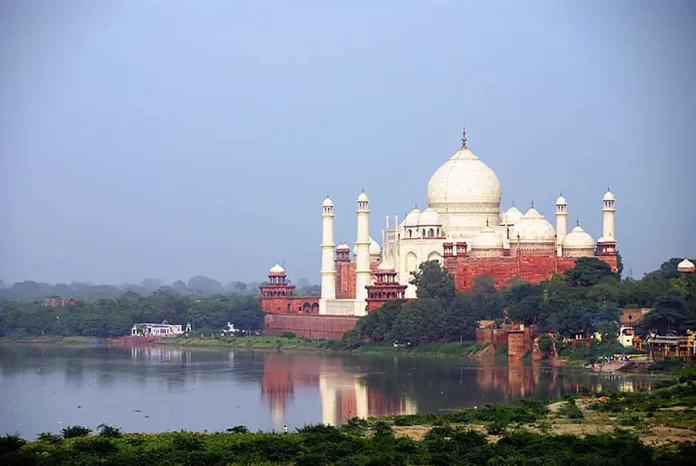The Astonishing Story of Taj Mahal – Latest Article on Culture Archive
In Agra, India, there is a masterpiece of Mughal architecture, which is known worldwide as the Taj Mahal. This shining tomb, spread across 42 acres, is the epitome of beauty but still has a heart-wrenching story to tell. Around 400-year-old Taj Mahal is the biggest and most magnificent. Now, it is considered the seventh wonder of the world. To build this magnificent structure, 20,000 laborers put in their blood and sweat for a straight 22 years.
All this started in 1607 when this region was ruled by the Mughal Empire. On that day, the youngest son of the Mughal emperor, Shahab-ud-din Muhammad Khurram, turned 15 years old. To celebrate this occasion, a splendid party was thrown at the Agra Fort. Khurram was the emperor’s favourite child, which is why he was weighed with diamonds and gold on every birthday, i.e., Khurram was gifted an equal amount of treasure as his weight. But something more special was about to happen on this birthday. The emperor arranged Khurram’s marriage with the daughter of one of his lawyers. Her name was Mumtaz Mahal. Mumtaz and Khurram fell in love with each other on the very first day. No one knew at the time that this love would become immortal.

For the next 10 years, the prince fought numerous battles and emerged victorious. That’s why the emperor gave him the title Shah Jahan, which means “Emperor of the World.” Shah Jahan had a total of six wives who lived in the harem of Agra Fort. Out of the six, Shah Jahan loved Mumtaz the most. This was the reason he spent most of his time with Mumtaz Mahal. Time passed quickly, and four years later, in 1621, the Mughal emperor died.
Shah Jahan, and his, succeeded the throne seven years later, in 1628. The entire Mughal Empire was quite happy with their new emperor. This was the time when the Mughal Empire was at its peak. The Mughal Empire was spread across India, Pakistan, and many parts of Afghanistan.
Shah Jahan used to make all the decisions, whereas Mumtaz Mahal used to give him suggestions behind the curtains. But no one knew that soon, this happy phase was going to turn into mourning. Within just one year of succeeding the throne, the Mughal Empire found itself in a war situation. For the next two years, the war continued, and Shah Jahan became victorious here too. But before he could celebrate his victory, he was given very sad news. Mumtaz Mahal, while delivering their 14th child, became ill, and on 17th June 1631, she died.

It is said that this sorrow pushed Shah Jahan into darkness. For the next eight days, he didn’t eat anything, and for the next two years, neither did he listen to any music nor used any perfume. Before dying, Mumtaz Mahal wished for one thing. She wanted her grave to be made inside the most beautiful tomb in the world. To complete this task and fulfill Mumtaz Mahal’s last wish, Shah Jahan decided to dedicate his whole life and wealth.
Six months after the death of Mumtaz Mahal, the construction work of the Taj Mahal began. Around 20,000 laborers, sculptors, and craftsmen were brought from the entire empire. Armies of men were brought to Agra on Shah Jahan’s order. Because Mumtaz Mahal’s grave was located on the bank of the Yamuna River, it was a very difficult task to construct the most beautiful building in the world here.

The land beside the river is soft, and if the place is excavated, the flow of water could harm the foundation of the Taj Mahal. To solve this problem, Mughal engineers started digging many wells. Laborers used to dig the wells until they found dry soil. These wells were then filled with rocks and rubble, and large columns of stones were erected over them. To execute this work, an army of elephants was used along with the laborers.
This technique of the Mughal engineers worked, and now a rock-solid foundation was ready upon the soft land. After the foundation, it was time to design a building that no one had ever seen before.
To construct the building structure, millions of bricks were baked at the location. This was not at all easy, and an enormous amount of money was spent on it. Every passing day, the royal treasury was getting empty. To take care of the laborers, Shah Jahan had brought food supplies from the surrounding areas to Agra.
After years of hard work, the main structure of the building was completed, and now it was time to decorate it with marble. This marble was brought from Rajasthan, 400 km away from Agra. The Makrana marble from this place is still believed to be the world’s finest. Shah Jahan had reserved the entire lot of Makrana marble for the Taj Mahal. This meant that until the Taj Mahal’s demand was met, no one was allowed to purchase this marble. Thousands of tonnes of marble were brought from Rajasthan to Agra with the help of thousands of elephants.
Taj Mahal’s dome is so big that by seeing it, one can feel its magnanimous size. The finishing work of the Taj Mahal was done with the decoration of Pietra Dura. Pietra Dura is a term for inlaying valuable stones inside the marble by cutting and fitting. The marble is very skilfully cut and sculpted according to the shape of the valuable stone, and then with the help of glue, it is attached inside the stone.
One of the special things about the Taj Mahal is that it changes colour four times a day. Before sunrise, it gives a black shade. After sunrise, it has a light yellow and pink shade. In the afternoon, it looks spectacularly white, like a white pearl shining in the blue sky. During sunset, the entire building looks golden. After 22 years, in 1654, the construction work of the Taj Mahal was completed.
This entrance for the Taj Mahal was built only for the royal family members. The walls of the entrance building have the finest sculpture work, which was done to please the eyes of the royals. Despite the successful completion of this project, it brought the Mughal Empire to the edge of ruin. Four years later, in 1658, his son overturned the throne and became the emperor of the Mughal Empire. Shah Jahan was made a prisoner and kept inside the Agra fort. One facility was given to Shah Jahan: he would be able to see the Taj Mahal through the window.
After eight years of being imprisoned, at the age of 74 years, Shah Jahan too left this world. It was now time for Shah Jahan to meet Mumtaz Mahal, and he was buried inside the Taj Mahal.
For more interesting facts about Taj Mahal – Click here
To read latest article on Culture Archive – click here

